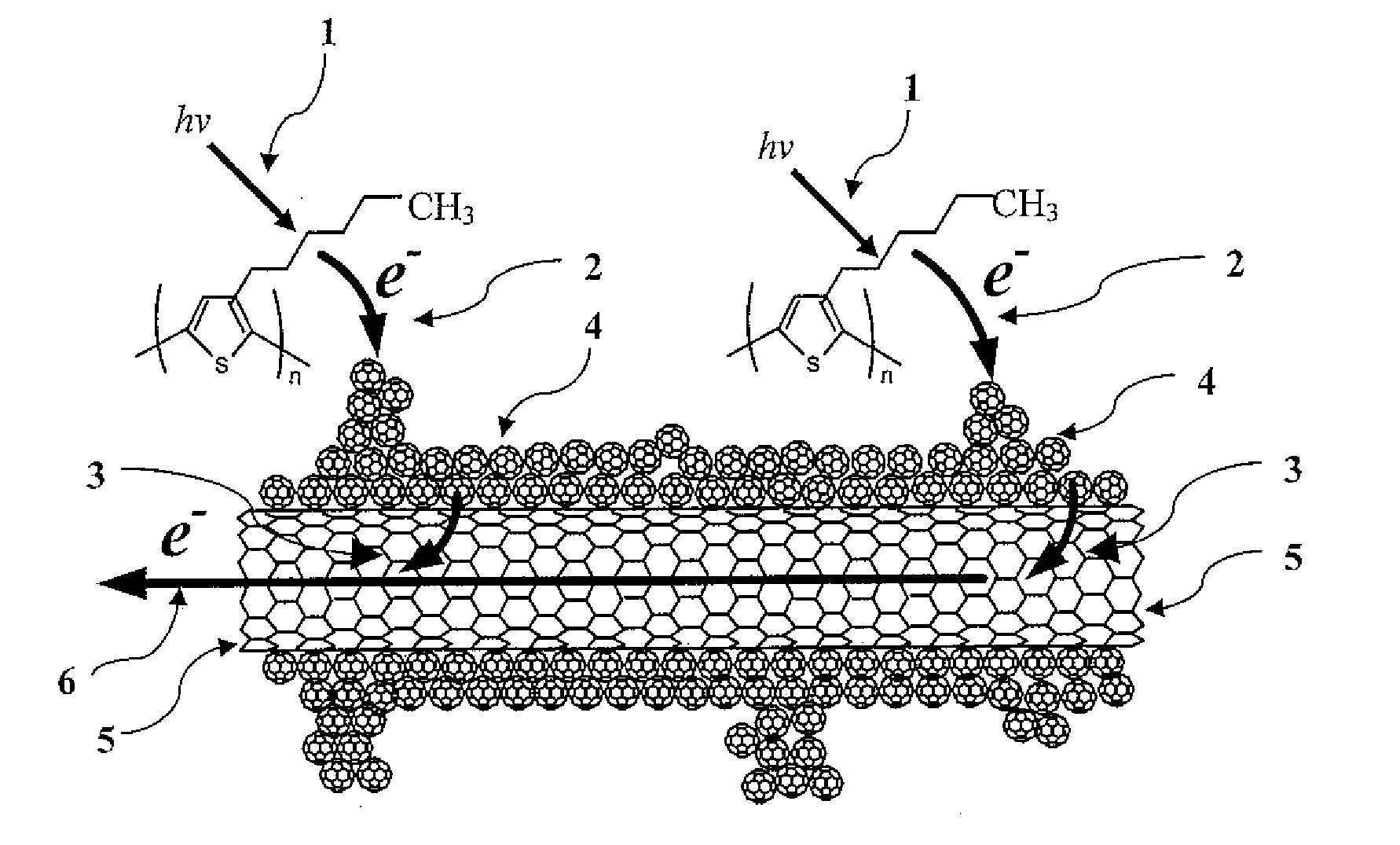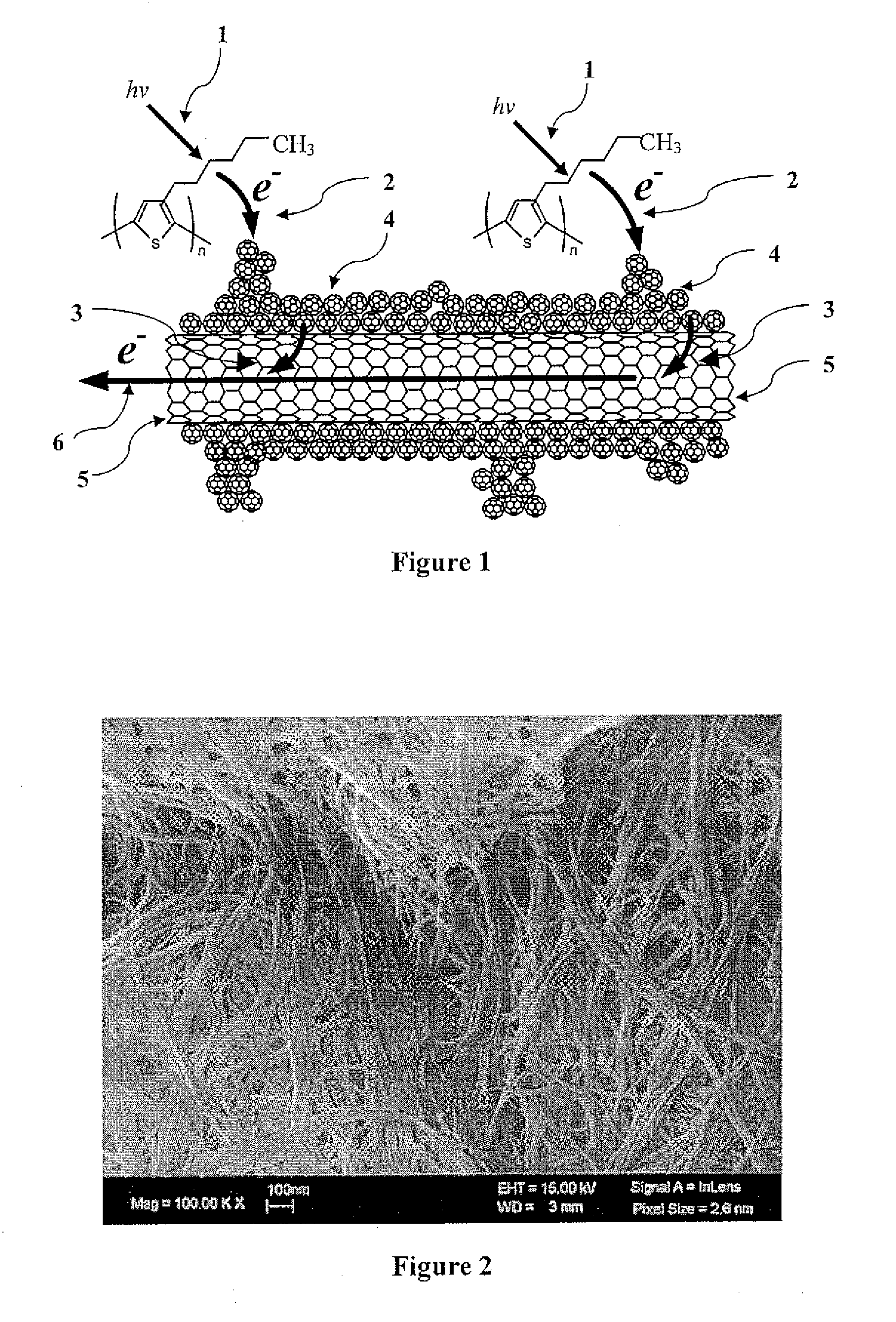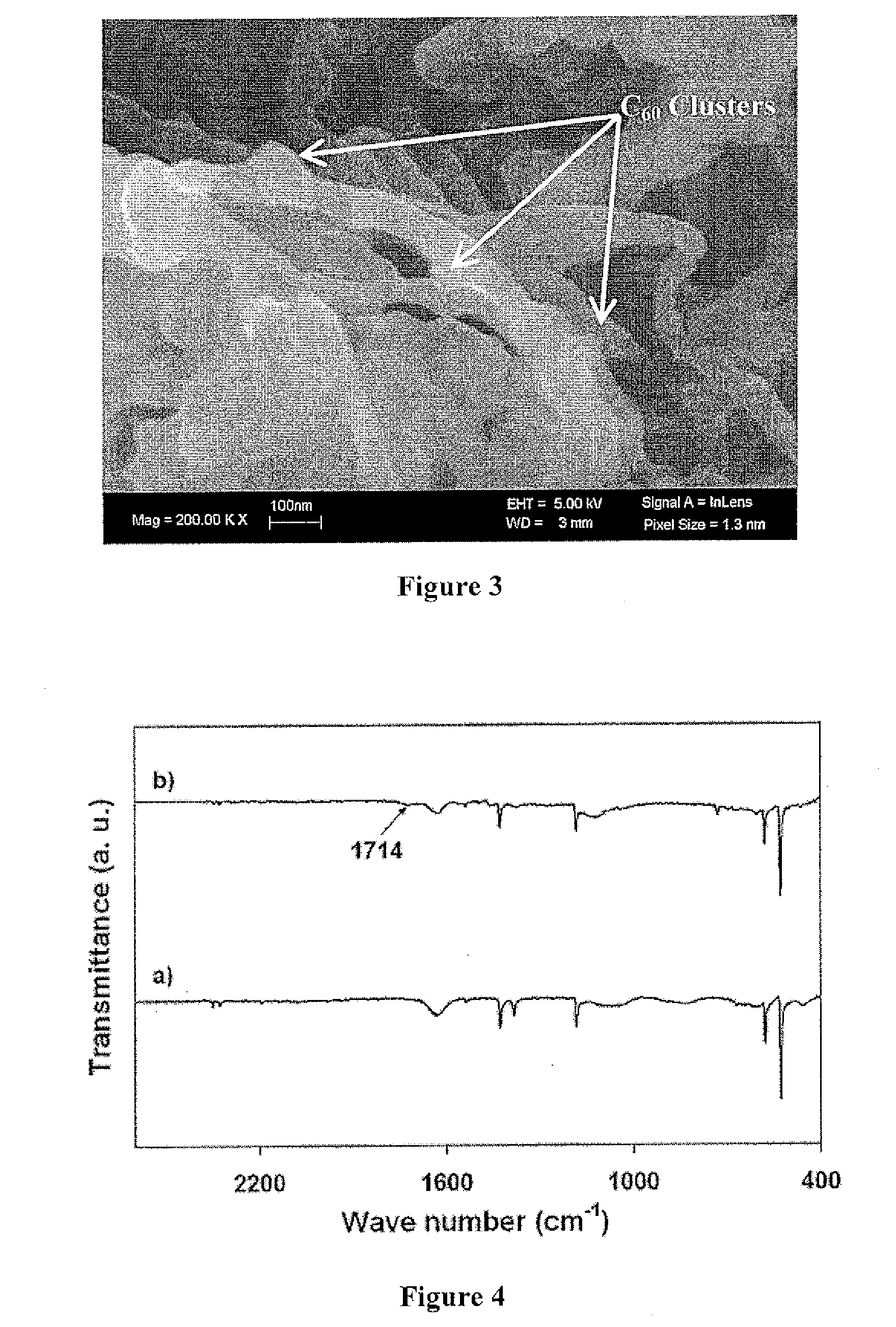Carbon Nanotubes As Charge Carriers In Organic and Hybrid Solar Cells
a solar cell and carbon nanotube technology, applied in nanoinformatics, sustainable manufacturing/processing, final product manufacturing, etc., can solve the problems of low energy conversion efficiency, and low energy conversion efficiency of amorphous silicon thin-film technology, so as to improve power conversion efficiency, improve optical absorption, and enhance the efficiency of organic and inorganic/organic hybrid photovoltaic devices
- Summary
- Abstract
- Description
- Claims
- Application Information
AI Technical Summary
Benefits of technology
Problems solved by technology
Method used
Image
Examples
Embodiment Construction
[0039]The following describes certain exemplary embodiments of the present disclosure. It should be understood that the following is intended merely to be exemplary of the disclosure.
[0040]The present disclosure provides cost effective organic photovoltaic devices with increased power conversion efficiencies over previously demonstrated OPVs. The present disclosure provides polymer:fullerene C60-carbon nanotube (polymer:C60-CNT) composites adapted and / or developed for organic photovoltaic cells. The disclosed composite generally includes a polymer as the electron donator, C60 as the electron acceptor and CNTs as a means of electron transport. As FIG. 1 illustrates, under light irradiation 1, photoinduced charge separation at the polymer / C60 interface 2 is followed by electron transfer 3 from C60 4 onto bonded CNTs 5. The CNT network provides a direct path for faster electron transport towards the electrode 6.
[0041]In exemplary embodiments, C60 is employed because C60 is a stronger e...
PUM
| Property | Measurement | Unit |
|---|---|---|
| concentration | aaaaa | aaaaa |
| concentration | aaaaa | aaaaa |
| area | aaaaa | aaaaa |
Abstract
Description
Claims
Application Information
 Login to View More
Login to View More - R&D
- Intellectual Property
- Life Sciences
- Materials
- Tech Scout
- Unparalleled Data Quality
- Higher Quality Content
- 60% Fewer Hallucinations
Browse by: Latest US Patents, China's latest patents, Technical Efficacy Thesaurus, Application Domain, Technology Topic, Popular Technical Reports.
© 2025 PatSnap. All rights reserved.Legal|Privacy policy|Modern Slavery Act Transparency Statement|Sitemap|About US| Contact US: help@patsnap.com



